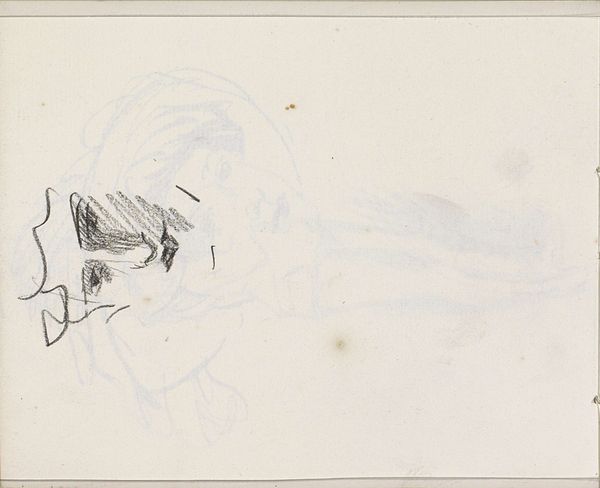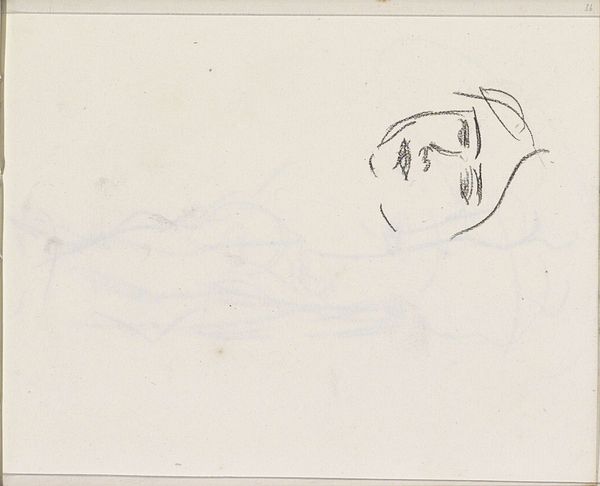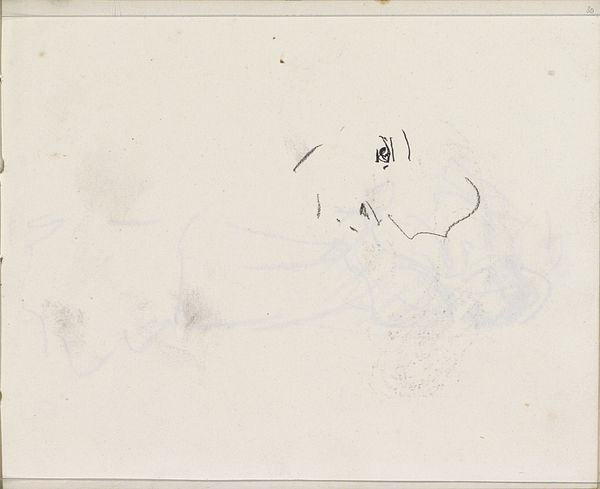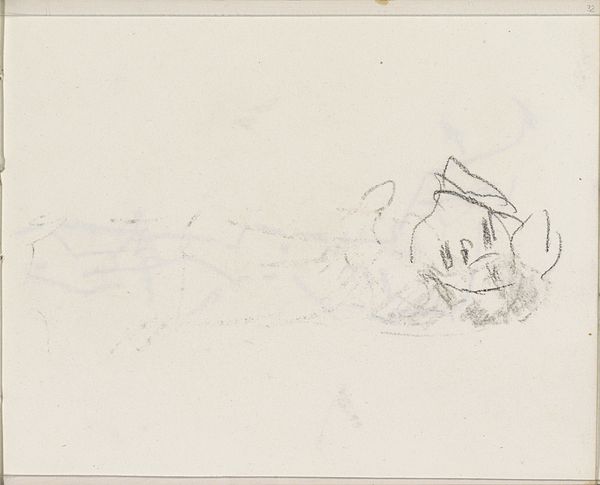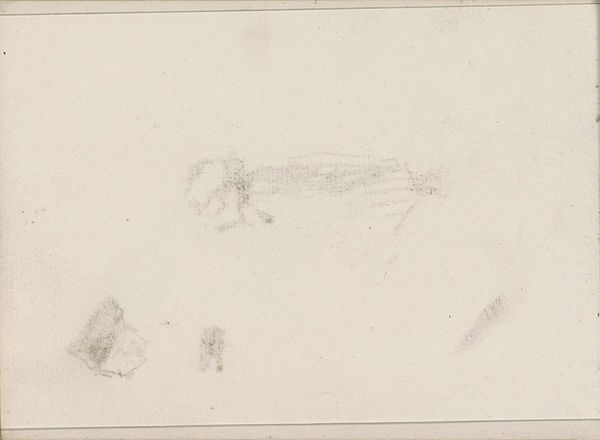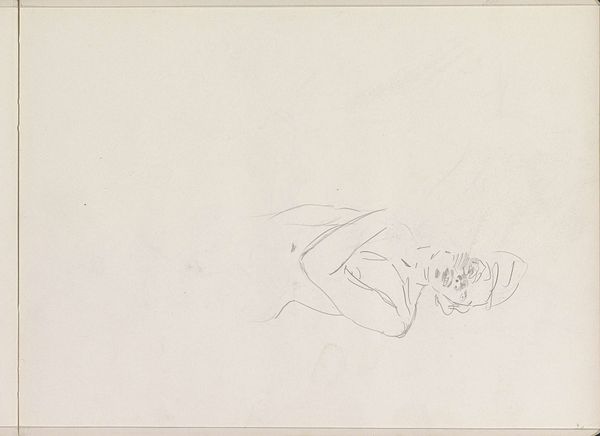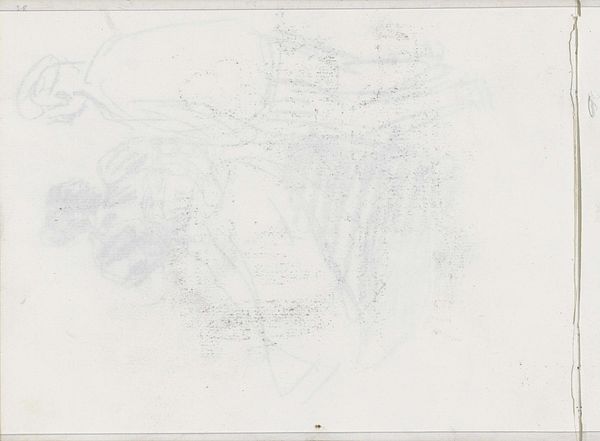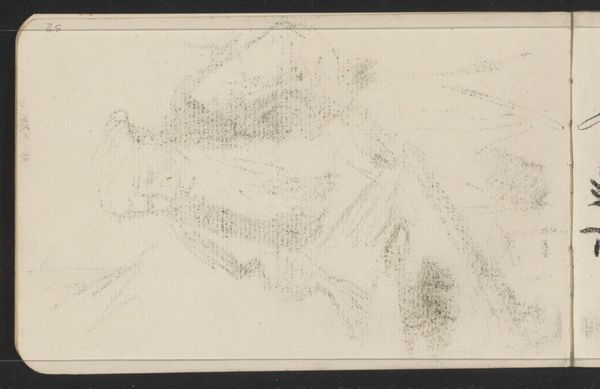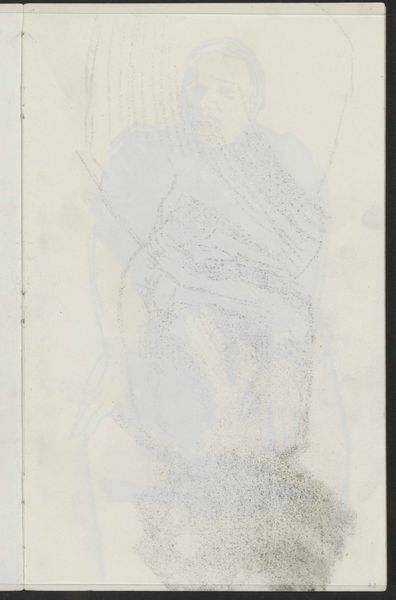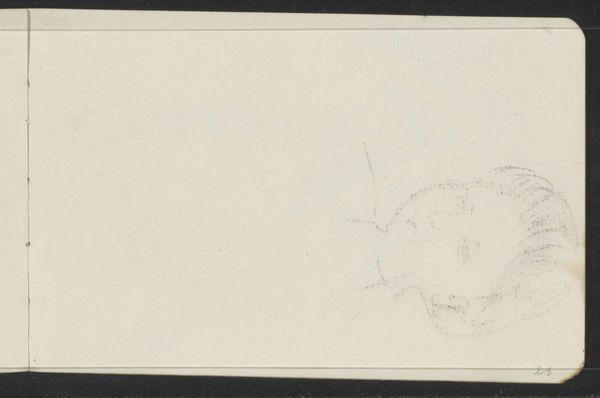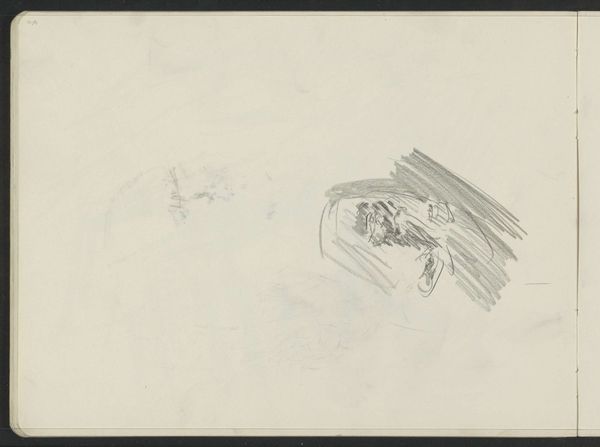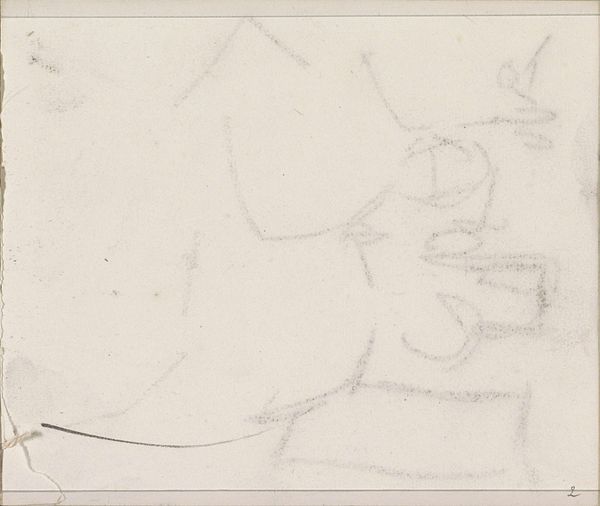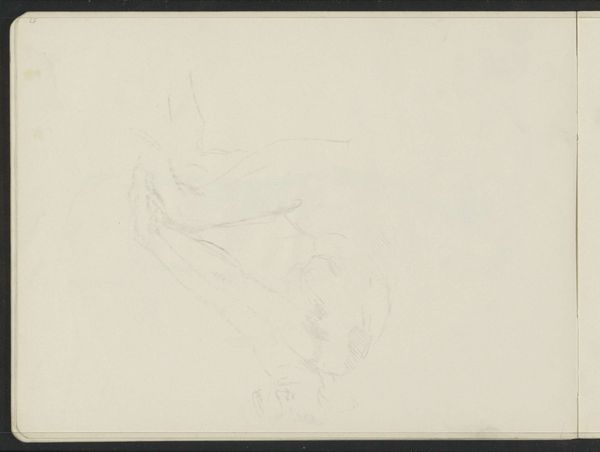
Copyright: Rijks Museum: Open Domain
Curator: This intriguing work is "Abklatsch van een krijttekening op pagina 36" - literally "rubbing of a chalk drawing on page 36." It was created by Isaac Israels sometime between 1875 and 1934. Editor: It’s ghostly. The smudged image has a fleeting, dreamlike quality... barely there, really. The vast blank space makes me uneasy; the page itself becomes a landscape of absence. Curator: "Abklatsch," the method Israels employed, involves pressing a drawing onto another surface to create a mirrored impression. The materiality is key; it is a process inherently linked to reproduction and the traces left behind, playing with the concepts of originality and the copy. And consider the artist's choice of medium: the chalk that created the original drawing then transferred onto paper again. It speaks of impermanence. Editor: Absolutely. You immediately think of ideas of memory itself—how fragmented and indistinct traces can be. This reminds me of archaic funerary rites where a rubbing could symbolically stand in for the deceased, their spirit barely captured. Is it possible the smudged profile points to mourning and remembrance? Curator: Interesting thought. Perhaps the act of reproduction here functions almost as a memento mori. Moreover, in Israels's time, the "Abklatsch" was also a common method to transfer technical drawings or botanical illustrations for wider distribution, underscoring the social implications inherent in art production during industrial age. It reminds us art materials have their own life. Editor: True. So, within the image, we can also observe that face which seems to be dissolving or appearing... It triggers that psychological space of suggestion where we viewers imprint the familiar and our own projections. Curator: A poignant final thought—this work allows us to consider process and reception alongside visual cues, complicating its own narrative as both art object and record. Editor: Yes, it shows how art, even a seemingly slight sketch, can evoke an awareness of time, loss, and enduring human need to remember.
Comments
No comments
Be the first to comment and join the conversation on the ultimate creative platform.
